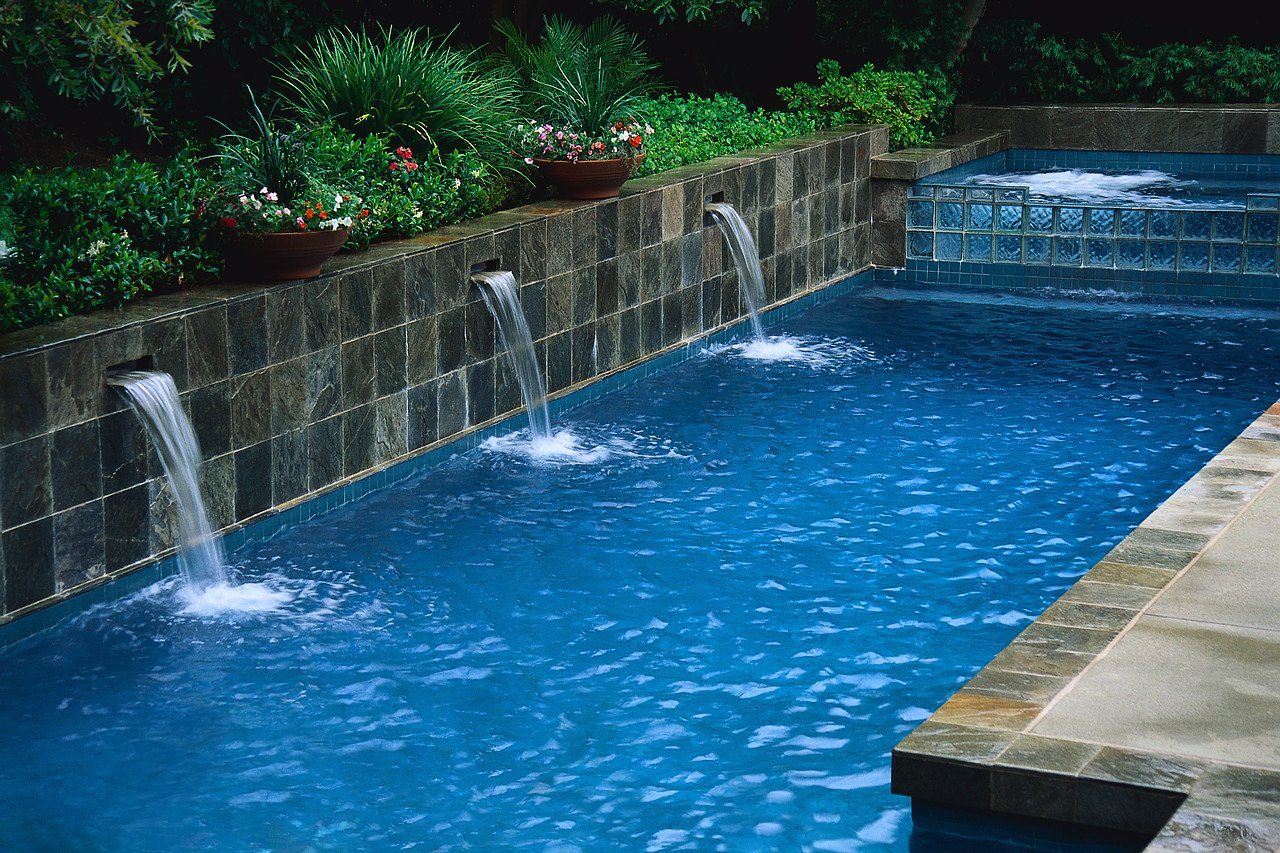HOW TO REMOVE CALCIUM SCALING & LOWER CALCIUM HARDNESS
To avoid experiencing calcium buildup, it is necessary to have a complete understanding of the steps you need to take. We're going to walk you through how to get your pool water back to its sparkling best so the whole family can enjoy it again in any Los Angeles' season.
If your pool has a layer of white or greyish-white grime around the waterline, it is called calcium. Calcium deposits can form when the pH level in your pool exceeds a certain number, which can cause staining on the tiles. It's similar to what happens in your bathroom sink, toilet, or bathtub.
If this happens, it needs to be addressed as soon as possible. Calcium deposits will not disappear on their own. If it's not removed, they can make your pool un-swimmable.
There are several ways to clean up calcium deposits. However, the steps you need to take are different from those you would take to remove calcium and lime build-up in your bathroom.
Read on to learn step-by-step instructions for identifying calcium buildup, removing deposits, and getting your pool levels back to perfect; so you can enjoy swimming in a clean pool with the peace of mind that it will be cleaner.
Identifying Calcium Buildup
There are two types of calcium-based compounds that form in pool water and create scales-calcium carbonate and calcium silicate. Both are caused by a pH imbalance. Your pool should be at a pH that falls between 7.4 and 7.6.
If your pool water has calcium carbonate, it will form white flaky scales. It's pretty easy to remove.
Calcium silicate, which is white-grey in color, can be more difficult to remove. It takes longer to form, so by the time you notice buildup on the side of your pool, it is likely that there are already problems elsewhere in your pool system. If this happens, you might need to hire a SFV Pool Cleaning in Los Angeles to clean it.
When you're not sure what type of calcium you have, it can be tested by examining the deposit. Add a few drops of muriatic acid to a sample. If the deposit reacts by foaming, there is a high concentration of calcium carbonate. If there is no fizzing or foaming reaction, then it's calcium silicate.
Lowering the Calcium
The first step when maintaining a swimming pool is removing calcium from the water. To do this, you'll need to partially drain your pool. The optimal calcium level is 200-400 ppm. A higher ppm causes deposits on the surface and cloudy water.
When the pool water is warm, refill it and adjust the pH. When you retest the pool water, the alkalinity should be lower.
It's also a good idea to maintain the chlorine level at 2-3 ppm, especially during warmer weather.
Adjusting the pH
The following step is getting your pool to the right pH and alkalinity.
If your pH levels are higher than optimal, then that means it's basic. The water is saturated and has a lot of extra material. In most cases, this deposit is calcium. To maintain pH balance, you need to add an acid.
Check for the pH level with a phenol red solution. It will change to different colors depending on the pH of the water.
If the water is high, add pool acid bit by bit. Don't add too much in hopes that you'll adjust the water level quickly. This can make the pH level swing in a different direction.
Los Angeles pool owners should typically add one gallon of acid for every 10,000 gallons of water in their pool. Then retest after 12 hours and make adjustments as needed.
Once the pH levels of the pool water are correct, you can begin to remove calcium from the water.
Removing Calcium Carbonate
The best way to remove calcium carbonate from tile and glass is with a calcium releaser/cleaner, preferably acid-free for the pool tile or glass.
If your pool's surface is paved with cement, you can try the pumice stone or scale remover.
A pumice stone is a great option for those with tiles or concrete. To prevent scratching the surface, make sure to keep both the pumice stone and the surface wet.
You can also use a commercial stain eraser to remove calcium carbonate. Stain erasers remove calcium carbonate deposits easily. For example, they are designed to be used on specific parts of the body and have a handle for reaching hard-to-reach areas.
If you have a fiberglass pool, then you'll want to use a scaling treatment. Most pool-scaling treatments are safe for any type of pool surface. The treatment is put in the pool water. Over a period of several weeks, deposits are slowly dissolved until they disappear. There's no scrubbing involved.
Removing Calcium Silicate
Removing calcium silicate deposits is a time-intensive task that requires the use of pumice stones and vigorous scrubbing. Though you can only use a pumice stone on tile or concrete surfaces. If you have a fiberglass pool, using a pumice stone on it will damage the surface.
Your second option is to use a professional calcium remover. It will break down the deposits.
You should first test the product to ensure that it does not scratch or discolor the surface. Stubbornly embedded scales may require more than one application of the remover.
Preventing Further Calcium Buildup
A great way to stop calcium build-up on pool tiles or glass is by applying a calcium blocker. This helps protect your tiles and the pool glass, which will help maintain its beauty for longer.
It is important to keep pH levels at a proper level so as to avoid calcium buildup in pools. You should monitor the pH level in the water and keep it in between a 7.4 and 7.6 range when possible. Maintain a proper pH. Doing so will prevent the mineral calcium from increasing in concentration and causing deposits or scaling.
You may want to install a pool cover. This will prevent too much evaporation. As water levels drop, calcium and other minerals become more concentrated.
In the end, it can be effective to use reverse osmosis treatment to remove calcium.
Enjoy Your Summer
It is important to be careful of and prevent calcium buildup so you still have great summer fun in this great Los Angeles city. Track your pool's water chemistry to ensure it is safe for swimming, and maintain a regular cleaning schedule.
If you see your pool show signs of cloudy or scaling water in the summer, don't wait to treat it. It's best not to go through a season without proper care for your pool.
You have a swimming pool in your backyard for family and friends to enjoy. The last thing you want is to have calcium scaling in the pool and for it to be off-limit because of buildup.
Contact Tony's Pool & Spa Services in Los Angeles and other areas if you want a crystal clear pool!








